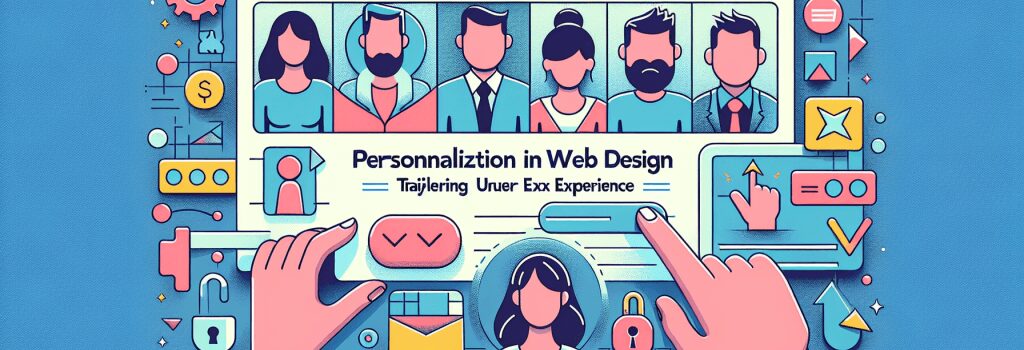Personalization in Web Design: Tailoring User Experience

Understanding Personalization in Web Design
The concept of personalization in web design isn’t just a trend; it’s an essential element that can markedly improve the user experience. Personalization means tailoring the design and content of a website to fit the needs, preferences, or interests of each user. In a world where users demand more intuitive and responsive online experiences, integrating personalization into your web design can make your site stand out and keep users coming back.
Why Personalize?
Enhanced User Experience: By personalizing the user experience, you’re essentially speaking directly to the user’s needs and interests, making their journey through your site both efficient and enjoyable.
Increased Engagement: Personalized content and design elements can significantly increase user engagement, as users are more likely to interact with content that resonates with them on a personal level.
Improved Conversion Rates: Personalization can also lead to higher conversion rates. When a user feels that a website has been tailored to their needs, they’re more likely to take the desired action, whether it’s making a purchase, signing up for a newsletter, or filling out a contact form.
How to Implement Personalization in Your Web Design
<h4>Understanding Your AudienceBefore you can personalize your web design, you need to have a clear understanding of who your audience is. This involves collecting and analyzing data on your users’ behavior, preferences, demographics, and psychographics. Tools like user surveys, analytics, and user testing can provide valuable insights into your audience and how they interact with your site.
<h4>Segmenting Your AudienceOnce you’ve gathered data on your audience, the next step is to segment them into different groups based on common characteristics or behaviors. This could include factors like age, location, browsing behavior, or purchase history. By segmenting your audience, you can create more targeted and personalized web experiences.
<h4>Personalizing Content and DesignWith a clear understanding of your different audience segments, you can start to personalize the content and design of your site for each group. This can be as simple as displaying different content based on the user’s location or as complex as using AI and machine learning algorithms to deliver a fully personalized web experience based on individual user behavior.
Examples of Personalization in Web Design
– Geolocation: Using the user’s location to personalize content, offers, or even the language of your website.
– Behavior-Based Personalization: Tailoring the web experience based on the user’s past behavior, such as suggesting products based on previous purchases.
– Personalized Recommendations: Using algorithms to recommend content or products that match the user’s interests or needs.
– Dynamic Content: Changing content dynamically based on time of day, user’s device, or interaction history with the site.
Challenges and Considerations
While personalization can significantly enhance user experience, it’s important to approach it with care. Privacy concerns are at the forefront of users’ minds, so ensure that your personalization efforts are transparent and compliant with data protection regulations. Additionally, personalization requires ongoing effort and refinement to ensure that you’re meeting the evolving needs of your users.
Conclusion
Personalization in web design is more than just a buzzword; it’s a comprehensive approach to making your website more engaging, efficient, and user-friendly. By understanding and segmenting your audience and tailoring the web experience to fit their needs, you can create a site that truly resonates with users. Although it comes with its challenges, the benefits of delivering a personalized web experience are undeniable, making it a worthwhile investment for any web developer.


